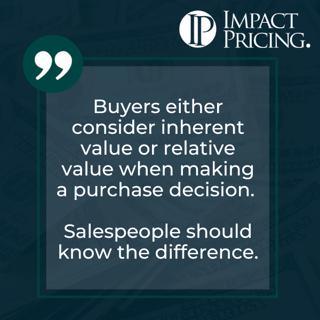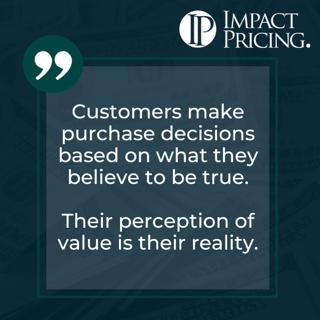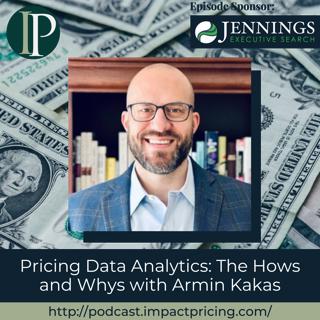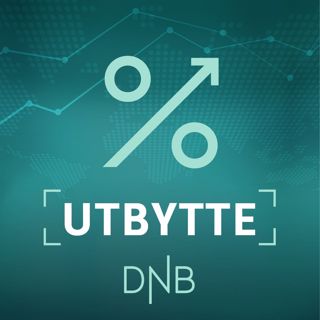
Adjusting for Inflation: How to Increase Your Price with Marina Dias
Marina Dias has been in the pricing industry for almost ten years. Currently, she is the senior pricing expert and consultant at Competera, a company that helps retailers and brands to increase customer trust by setting and maintaining optimal prices in real-time. In this episode, Marina explains why constant communication with clients is essential in creating pricing strategies. She also enlightens us on the concept of price elasticity, and why understanding it is especially important in this time of inflation. Why you have to check out today’s podcast: Learn the importance of having constant communication with your client about pricing strategies despite the widespread of AI and pricing software Understand the concept of price elasticity Find out how you could adjust your prices in this age of inflation “Think about governance; and don’t forget that pricing, at the end of the day, is about people – our customers, our colleagues, and our internal resources of an organization.” – Marina Dias Topics Covered: 01:01 – How Marina got into pricing 02:58 – Why more than just dealing with numbers, pricing is an art 07:12 – Why talking to clients about pricing strategies is still important despite the widespread of AI and “black box” pricing software 10:35 – Competera‘s advice to their clients with regards to dealing with inflation 14:06 – Pricing shall be focused on experience at all times, but pricing strategy and processes are critical in this time of inflation 16:15 – Defining price elasticity and the different factors that affect it 19:37 – Understanding elasticity, and how it plays a vital role in a company’s decision making 23:21 – Pricing table topics: “Don’t raise prices on subscribers who aren’t using the product.” 27:09 – Marina’s pricing advice Key Takeaways: “I would say that we cannot apply stoicism when we are working at our daily business, because it's something that if we forget about the things that we cannot control, they will control us.” – Marina Dias “People migrate between brands. People migrate between competitors. People have the decision at the end of the day, but we have the power to influence. It's one of the variables that we cannot control, of course. It's our costumers’ behavior, but we have the power to influence this through pricing.” – Marina Dias “At the end of the day, elasticity… it's only a number. But it can help us to drive to have scenarios in our hands and to be able to support our decision making.” – Marina Dias People / Resources Mentioned: Competera: https://competera.net/ Connect with Marina Dias: LinkedIn: https://www.linkedin.com/in/marinandias/ Connect with Mark Stiving: LinkedIn: https://www.linkedin.com/in/stiving/ Email: mailto:mark@impactpricing.com
14 Nov 202229min

Blogcast #80: Raise Prices Now
This is an Impact Pricing Blog published on October 5, 2022, turned into an audio podcast so you can listen on the go. Read Full Article Here: https://impactpricing.com/blog/raise-prices-now/ If you have any feedback, definitely send it. You can reach us at mark@impactpricing.com. Now, go make an impact. Connect with Mark Stiving: Email: mark@impactpricing.com LinkedIn: https://www.linkedin.com/in/stiving/
11 Nov 20221min

Memecast #83: Queen of Diamonds: Inherent Value and Relative Value
This one is the Queen of Diamonds from the Selling Value card deck. It's true, buyers are using inherent value or relative value. This is how they think about the decision that they're making. And salespeople's job should be to help buyers make that decision so we should understand what's the decision a buyer is making. What's the information they need at any given point in time? Well, inherent value is the value of solving a problem. Do I need to buy a new car? Do I need to buy a guitar? Do I need to buy a new dishwasher, a new refrigerator? Do I need to buy a pencil, a new software application? This is the inherent value, what's the value of solving the problem? So why might I need a new car? Because I just crashed mine. Or it just broke down. Or it's getting old. Or I just got a job where my image is really important. These are all great reasons why I might need to buy a new car. And these are inherent value. Are we thinking about the way our buyers are thinking through do I need to buy one of these or not? Oftentimes after they said yes, then they go into relative value. And relative value is, how is your product better than a competitor's product, or different than a competitor's product? What does it do? How does it behave? So, we start thinking of relative value as comparing different alternatives. Our buyers are truly thinking in those two different ways even if they can't articulate it. As salespeople, we should make sure we understand that so we can help buyers make the best decision for them and for us. We hope you enjoyed this memecast. This is also an example of how Pricing Table Topics works. Grab a deck of our cards, pull a random card, read the saying, then talk for one to two minutes about what that card says. This will improve your understanding and more importantly, your ability to communicate important concepts around value. If you have any questions or feedback, please email me mark@impactpricing.com. Now, go make an impact. Connect with Mark Stiving: Email: mark@impactpricing.com LinkedIn: https://www.linkedin.com/in/stiving/
9 Nov 20222min

Reading Facial Microexpressions for Business and Negotiations with Annie Sarnblad
Annie Sarnblad has a Masters in Cultural Anthropology. She is certified in Facial Action Coding and can numerically code the 10,000 muscle combinations in human expression. With this skill, Annie has been helping companies to make informed decisions. Besides her corporate clients, Annie also helps high-profile families with heightened security needs, individuals navigating charged political situations, educators, peace mediators, medical professionals, and others. In this episode, Annie talks about the importance of understanding microexpressions in business. She also discusses some of the most observable expressions that would enable business people to assess the situation properly and make necessary adjustments when needed. Why you have to check out today’s podcast: Learn about the science behind facial microexpressions Discover how understanding facial microexpressions could help you in your business Acquire knowledge about the most common microexpressions and how to capitalize on them when you are in a business meeting “My piece of advice is for any business to recognize the importance that pricing can play in reaching their growth targets and objectives and making sure that they recognize that pricing has to be rooted in value.” – Annie Sarnblad Topics Covered: 01:42 – Annie explains her skill of being a “human lie detector” 04:11 – The science behind reading facial microexpressions 08:32 – You have no control over facial microexpressions; it just shows 12:19 – No one can really just “smile” for the camera, except when they are actually happy 14:04 – Annie doesn’t remember static faces, only the muscle movements 18:43 – Observing the pupil is the easiest to learn because we are already looking at the eyes 22:02 – Why Annie wanted to learn how to read microexpressions 24:30 – Always look out for “disgust” or the “no” face when you are in a meeting 26:16 – Seeing the “no” face means that you have a choice to make 28:57 – How simply looking for pupil dilation could help you pivot from one topic to another and increase your price 31:05 – Annie’s pricing advice Key Takeaways: “Muscle movement precedes the thought process. Even somebody like me that's hyper-trained and thinks about this 24/7, I can't stop myself from making the micro expressions unless I change my thought patterns and think about something else.” – Annie Sarnblad “Nobody's ever felt cheerful when they get an order to smile.” – Annie Sarnblad “If we're building strategy, we can have incredibly intelligent, high-level strategic brains and know the business, know the industry, know the players. But if we're not understanding how the players are interacting with each other, what their primary motivations are, what's in it for them, if we don't understand what's under the surface, we're basing our strategy on the wrong things.” – Annie Sarnblad “Once people have a vocabulary for the stuff that they see all the time, they then can have a much higher-level conversation.” – Annie Sarnblad “I think people just are so rushed to get everything closed immediately that they sometimes don't use all the information that's available to them to make good choices.” – Annie Sarnblad Connect with Annie Sarnblad: LinkedIn: https://www.linkedin.com/in/annie-sarnblad/ Connect with Mark Stiving: LinkedIn: https://www.linkedin.com/in/stiving/ Email: mailto:mark@impactpricing.com
7 Nov 202233min

Blogcast #79: Reading Buyers Minds
This is an Impact Pricing Blog published on September 28, 2022, turned into an audio podcast so you can listen on the go. Read Full Article Here: https://impactpricing.com/blog/reading-buyers-minds/ If you have any feedback, definitely send it. You can reach us at mark@impactpricing.com. Now, go make an impact. Connect with Mark Stiving: Email: mark@impactpricing.com LinkedIn: https://www.linkedin.com/in/stiving/
4 Nov 20222min

Memecast #82: Queen of Clubs: Customers Perception of Value is their Reality
This one is the Queen of Clubs from the Selling Value card deck. Customers' perception of value is their reality. This is absolutely true. Think about when you purchase something. You don't have the time or the energy to go out and learn everything there is to possibly know about everything. In fact, if you're like me, you've probably purchased things, and made a mistake, "Oh, this really didn't solve the problem I thought it was going to solve. It really didn't look the way I thought it was going to look or act the way I thought it was going to act." And what that really meant was that before we bought the product, we had this perception of what we thought the product would do, and it didn't live up to that. The 'didn't live up to that' is true reality. This is what it really does. But prior to the purchase, the only thing that mattered was what we believe. And this is true of our customers as well. Prior to them making a purchase decision, all they can do is use what they believe to be true as information to make the decision. We need to understand that because our job, if we're selling value, is to make sure their perception of our value is really high. Ideally, we make sure it's accurate, but we want to make sure it's high. We hope you enjoyed this memecast. This is also an example of how Pricing Table Topics works. Grab a deck of our cards, pull a random card, read the saying, then talk for one to two minutes about what that card says. This will improve your understanding and more importantly, your ability to communicate important concepts about value. If you have any questions or feedback, please email me mark@impactpricing.com. Now, go make an impact. Connect with Mark Stiving: Email: mark@impactpricing.com LinkedIn: https://www.linkedin.com/in/stiving/
2 Nov 20222min

How Retail and Analytics-Based Pricing Works with Kiran Gange
Kiran Gange is the CEO and Founder of RapidPricer, a company that helps automate pricing and promotions for retailers. He helps companies grow internationally, especially into India. And he was a Senior Strategy Analyst at Fry’s Electronics. In this episode, Kiran educates us on retail and analytics-based pricing as he shares hypotheses and strategies you can practice in pricing your own products. Why you have to check out today’s podcast: Learn how to price retail products both in B2B and B2C setting Understand why you should increase your price in phases and not shock your customer at once Find out how important analytics-based pricing in, and discover strategies on how you can actually do it in your business “Look at your past data. Use your intuition to guide the data analysis, but don’t only base your decision on intuition.” – Kiran Gange Topics Covered: 01:31 – How Kiran got into pricing 02:36 – Pricing in both the environments of B2B and B2C in retail 05:07 – A hypothesis to test for foot traffic and cameras 07:13 – Talking about the work that RapidPricer does 11:15 – The strategy on how to rapidly change prices, and the difference between base price and promoted price 14:00 – The difference between AI and a strategically thought-out programming 17:06 – Discussion around analytics-based pricing frameworks, and Mark’s ‘which one’ and ‘will I’ concept 21:01 – Using AI to know which products people are price sensitive on 22:09 – Pricing table topics: “Execute price increases in phases; test the outcomes.” 24:08 – Kiran’s pricing advice Key Takeaways: “There’s a difference between a base price and a promoted price. The base price is when you decide what is the right price to keep inside your store for a longer time. A promotion is an instant decision, typically to correct something which is a negative factor.” – Kiran Gange “Customers don't like prices changing up on them instantly.” – Kiran Gange “Strategy is always the foundation behind how the prices should be done. It shouldn't be an entirely “I have no clue what's happening. Here’s the price. Here you go. Cancel the black box.” Ever. I believe, at least retailers are so traditional; they won't accept a solution like that.” – Kiran Gange “You need to know which products are people sensitive about and make sure they get the best value on those products to compete on those products. And the others can be your profit drivers.” – Kiran Gange “Whenever you have this cost increases, have like a strategy to understand which products are going to absorb the cost over time and which products can take it immediately. That will help you both stay up to date with your latest cost and not upset your customers too much.” – Kiran Gange People / Resources Mentioned: RapidPricer: https://www.rapidpricer.com/ Fry’s Electronics: https://www.youtube.com/fryselectronics DemandTec: https://www.demandtec.com/ Amazon: https://www.amazon.com/ Connect with Kiran Gange: LinkedIn: https://www.linkedin.com/in/kirangange/ Connect with Mark Stiving: LinkedIn: https://www.linkedin.com/in/stiving/ Email: mailto:mark@impactpricing.com
31 Okt 202226min

Blogcast #78: Value-Based Prospecting
This is an Impact Pricing Blog published on September 21, 2022, turned into an audio podcast so you can listen on the go. Read Full Article Here: https://impactpricing.com/blog/value-based-prospecting/ If you have any feedback, definitely send it. You can reach us at mark@impactpricing.com. Now, go make an impact. Connect with Mark Stiving: Email: mark@impactpricing.com LinkedIn: https://www.linkedin.com/in/stiving/
28 Okt 20223min






















